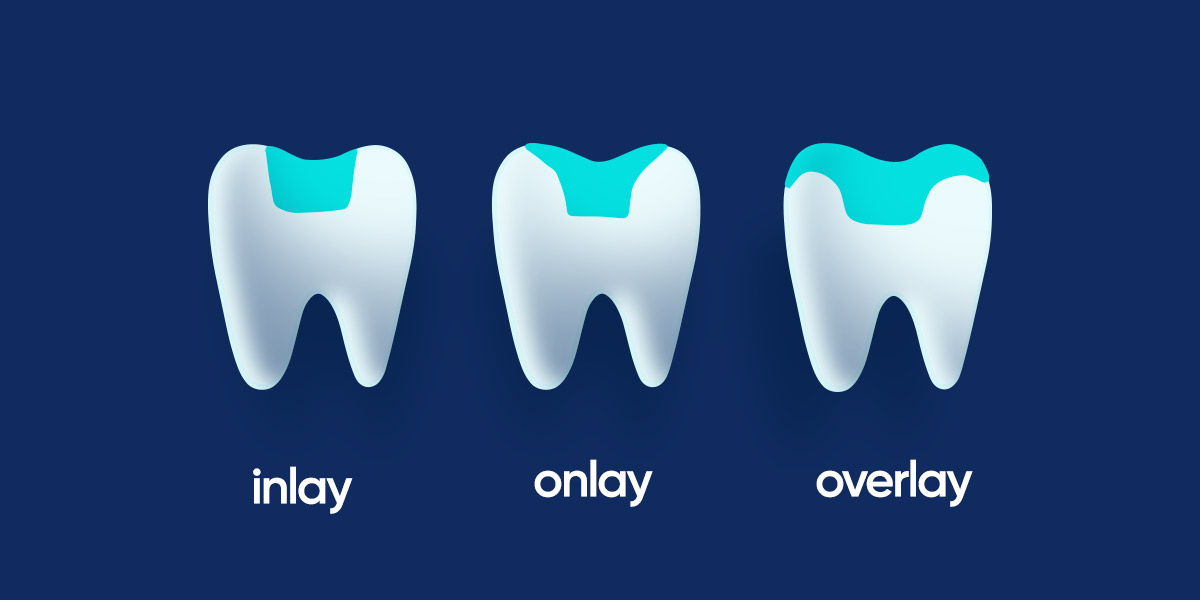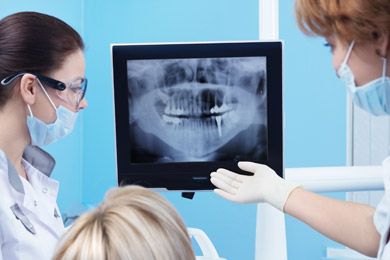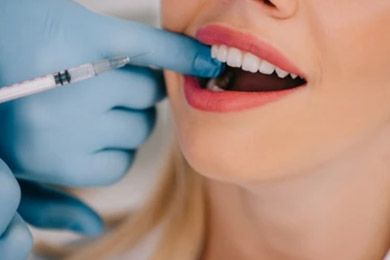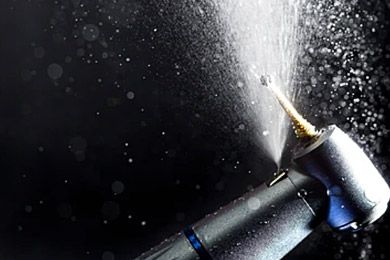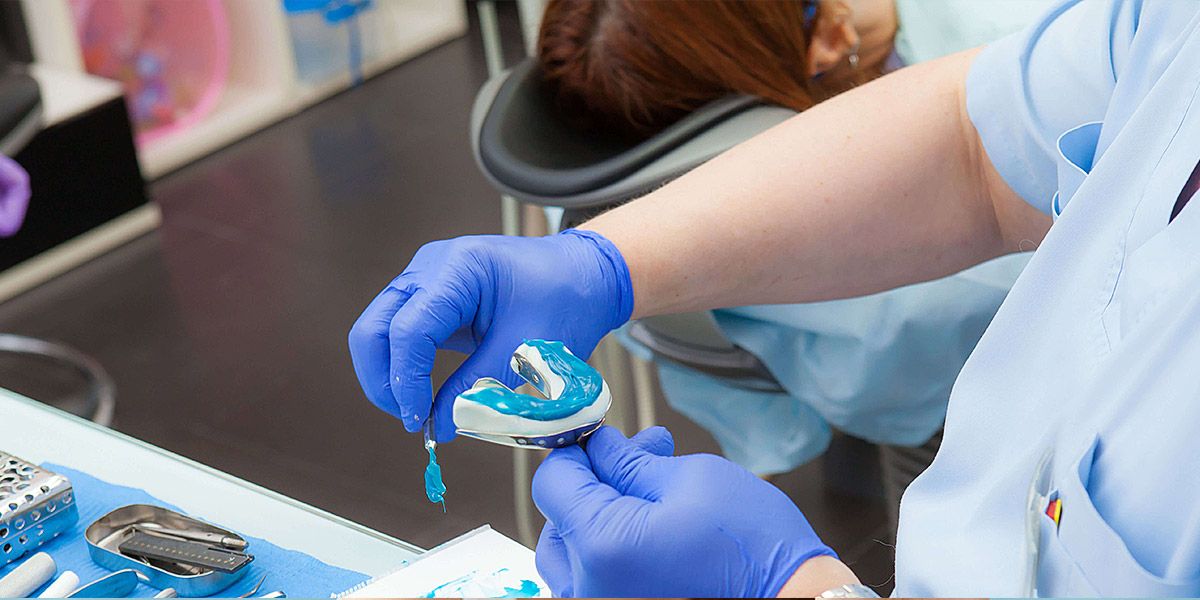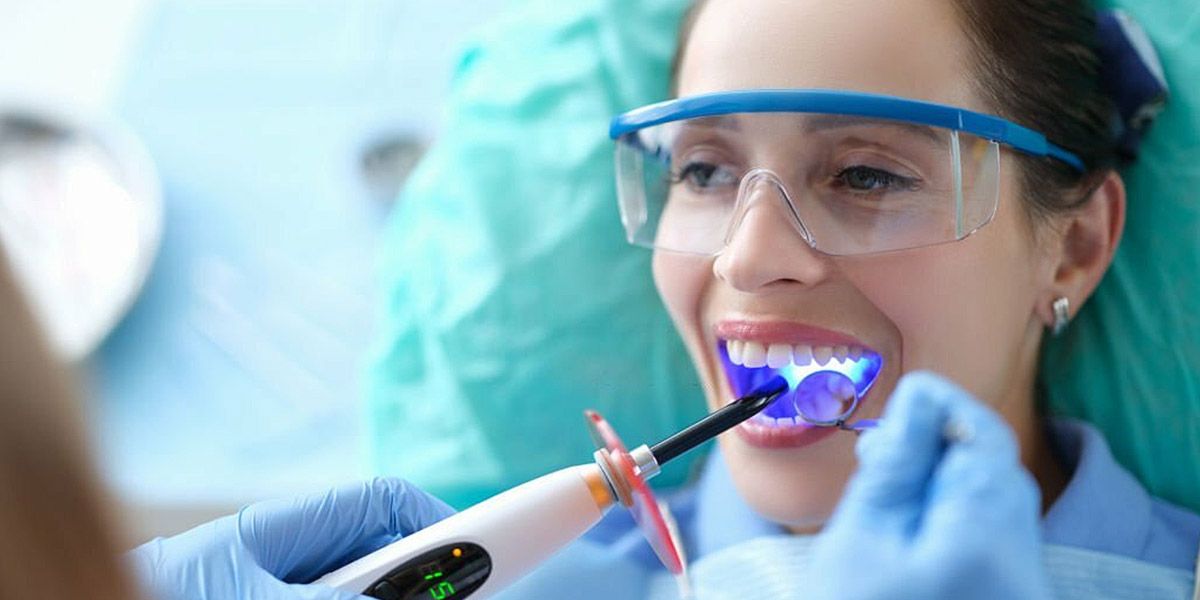Dental inlays-onlays are a more aesthetic and durable option than composite fillings. Treatments are performed by experienced dentists in dental centres in Turkey. You should be treated before tooth decay causes more serious health problems.
When the caries in the teeth is very large, composite fillings may not be a long-lasting treatment option. Because in cases where there is a lot of losing material, the tooth tissue may break as a result of chewing forces. As a result of the fracture of the remaining tooth tissue, the tooth may become unrestorable. For this reason, dental inlay & onlays and dental veneers are preferred as a more durable and long-lasting treatment method in cases where the tooth is severely damaged. Dental veneers may sometimes be the only option depending on the level of damage to the tooth. However, in conditions where the damage is relatively less, dental inlay & onlays are preferred as they are also less invasive than dental veneers. Because less tooth tissue is removed during dental inlay & onlay treatment. Currently, dentists prefer to apply treatments by protecting the healthy tooth tissue as much as possible.
The tooth damage is worse, the fit of the composite fillings applied directly in the mouth will be poor. When the fit of the fillings is poor, bacterial leakage occurs from the area between the filling and the tooth. The bacteria decays the healthy tooth tissue under the filling over time. Often, caries occurring under the dental filling is sneaky because it cannot be seen in the inside of the mouth. It can reach large sizes without being noticed and cause problems up to tooth loss.
Dental inlays & onlays are not prepared directly in the mouth. After the decayed tissue in the tooth is removed, it is produced as custom made in the laboratory environment, so it is much more fit. Ceramic dental inlay & onlay is a more strong material than composite. Since it is custom made, the forces generated by biting can be adjusted more ideally. It is more resistant to abrasion and fracture than composite fillings. It can be used for a very long time as long as regular dental controls and hygiene are provided.
When the larger restorations are required, it is very difficult to ensure the contact harmony with the adjacent tooth with composite fillings made directly in the mouth. In cases where contact harmony cannot be achieved, negativities such as food jamming between the teeth may occur. Dental inlay and onlay restorations are more successful in terms of contact compatibility compared to conventional dental composite fillings.
Dental inlay and onlay treatment can be preferred instead of composite tooth filling even if the damage to the tooth is not serious. Since it is custom made, shape and colour fit will be achieved much more easily. Much more aesthetic results are obtained than composite fillings.
Composite fillings absorb water over time and change colour due to foods that cause discolouration. Ceramic inlays and onlays cannot be discoloured over time because they do not absorb water. Therefore, it is a very ideal choice for patients with high aesthetic expectations.
If old dental amalgam fillings are to be replaced, inlay-onlay can be preferred instead. Amalgam fillings provide mechanical retention on the tooth, so more tooth tissue is removed when they are made. Since the cavity is relatively larger, inlay-onlay will be a more long lasting and robust solution.
Dental inlays and onlays are custom made aesthetic fillings prepared in the laboratory for the restoration of cracked and decayed teeth. It is generally preferred in the treatment of large caries, repair of cracked teeth, restorations made to the tooth after root canal treatment and replacement of old amalgam fillings. It is mostly produced from ceramic material, sometimes it can also be produced from fibre-reinforced composite material. Inlays are placed in the area between the cusps of the teeth similar to dental composite fillings. Onlays are made to cover one or more cusps up to the chewing surfaces of the teeth. Cusps are the name given to the bumps shaped like hills on the chewing surface of the back teeth.
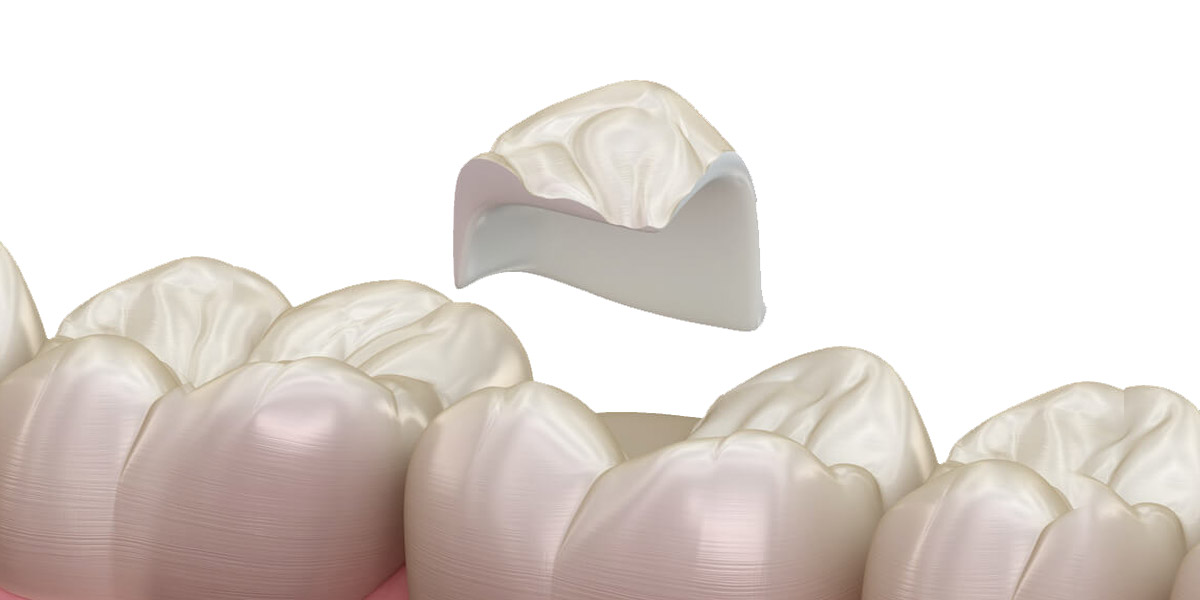
If the fit of the inlay-onlay is poor, there will be bacterial leakage between the tooth and the ceramic material and the tooth decays under the restoration. If regular dentist visits are not done, this decay will not be noticed and may cause major problems up to the loss of the tooth.
If there is an unrecognised mistake during impression taking or inlay & onlay production, fractures may occur in the tooth or restoration. Therefore, the choice of the dental centre to be treated is important.
If sufficient saliva and blood isolation is not provided during bonding, the inlay-onlay may fall off. Please visit your dentist for re-bonding.
If the material to be produced inlay-onlay is not selected correctly, abrasion may occur on the opposite tooth it comes into contact with, especially in patients with clenching teeth.
If the contact fit with the adjacent tooth is not controlled during inlay-onlay treatment, situations that may reduce the comfort of life such as food jamming may occur. Please visit your dentist for adjusmtment of contact.
As a result of the temporary filling falling off between two visits, negativities such as sensitivity and food jamming may occur. If your temporary filling falls out, visit the dentist immediately.
It is normal to have sensitivity for a while after the inlay onlay is performed, but if the sensitivity lasts too long, it indicates the presence of a negative situation. If the sensitivity lasts longer than 3-4 weeks, do not neglect to visit the dentist.
If the sensitivity of the inlay & onlay performed tooth is very high, or if the pain persists, root canal treatment may be required. If it is not treated, the tooth may need to be extracted.
Dental inlays and onlays are affordable in Turkey. If you want to get quality dental treatment services from specialised dentists at an affordable price, please check the mini price list that we have prepared for you.
| Dental Treatment Prices in Turkey | |
|---|---|
| Consultation | Free |
| Panaromic X-ray | Free |
| Examination | Free |
| Local Anesthesia | Free |
| Dental Inlays & Onlays (ceramic) | £ 175 |
| Composite Dental Filling (2-3 faces) | £ 60 |
| Metal Porcelain Crown (per tooth) | £ 130 |
| Zirconium Crown (per tooth) | £ 195 |
| emax Crown (per tooth) | £ 325 |
| Root Canal Treatment (dental filling is included) | £ 150 |
Do not eat anything until the numbness in the lips, cheeks and tongue disappears after local anaesthesia. The numbness usually lasts for 2 hours depending on the intensity of the anaesthesia. Thus, accidental biting of the soft tissue is avoided and the partial durability of the filling increases.
It is usual to feel sensitivity after filling. Within a few weeks, the sensitivity decreases and disappears completely. If sensitivity has not disappeared after 3-4 weeks, you should consult a dentist.
If the sensitivity remains, your dentist will apply desensitisation treatments. If the sensitivity is very severe or spontaneous pain occurs, root canal treatment may be required.
If pain is felt when biting, it is probably caused by the height of the filling. You should contact your dentist.
In order for your filling to be long-lasting, brushing and flossing should not be skipped. Regular visits to the dentist to have your fillings checked should not be neglected.
The treatment is decided with a detailed intraoral examination and panoramic x-ray image. The dentist recommends inlay-onlay treatment by considering the patient's aesthetic expectation, oral bad habits, clenching teeth habits and his/her age.
The dentist will inject a local anaesthetic into the area before removing the decay so that you do not feel pain during the procedure. You will have to wait for a while for the local anaesthetic to take effect.
During the first dentist visit, the decayed and damaged surface is removed from the tooth. The surface of the tooth is shaped to increase the fit of the ceramic inlay and the cavity preparation is completed. Thus, the strength and aesthetics of the tooth are improved.
After the cavity preparation is completed, conventional dental impressions or digital impressions are taken with a 3D intraoral scanner. After the colour of the tooth is determined by the dentist, the impressions are sent to the laboratory. The cavity is restored with temporary filling and the first dental session is completed.
Your dentist may numb the area before removing the temporary filling on the second visit. The ceramic inlay-onlay is tried in the mouth and the bite is adjusted. If there is height, it is removed. After the fitting process is over, the tooth surface is cleaned and the inlay-onlay is bonded to the tooth with special dental bonding agents. Hardening of the bonding is ensured by applying dental curring light. At this stage, the dentist takes the necessary precautions to prevent the area from contact with saliva or blood. The treatment is completed by polishing in the mouth.
The healing period after dental inlays onlays depends on post-treatment care. In order to shorten the healing time after the treatment, the patient should pay attention to the article as above.
We do our best to ensure that our patients' dental treatments are comfortable. Keeping their satisfaction at the highest level is very important to us.
Please fill the form, we will contact to you for online dental consultation.
Please fill the form, we will contact to you for online dental consultation.




